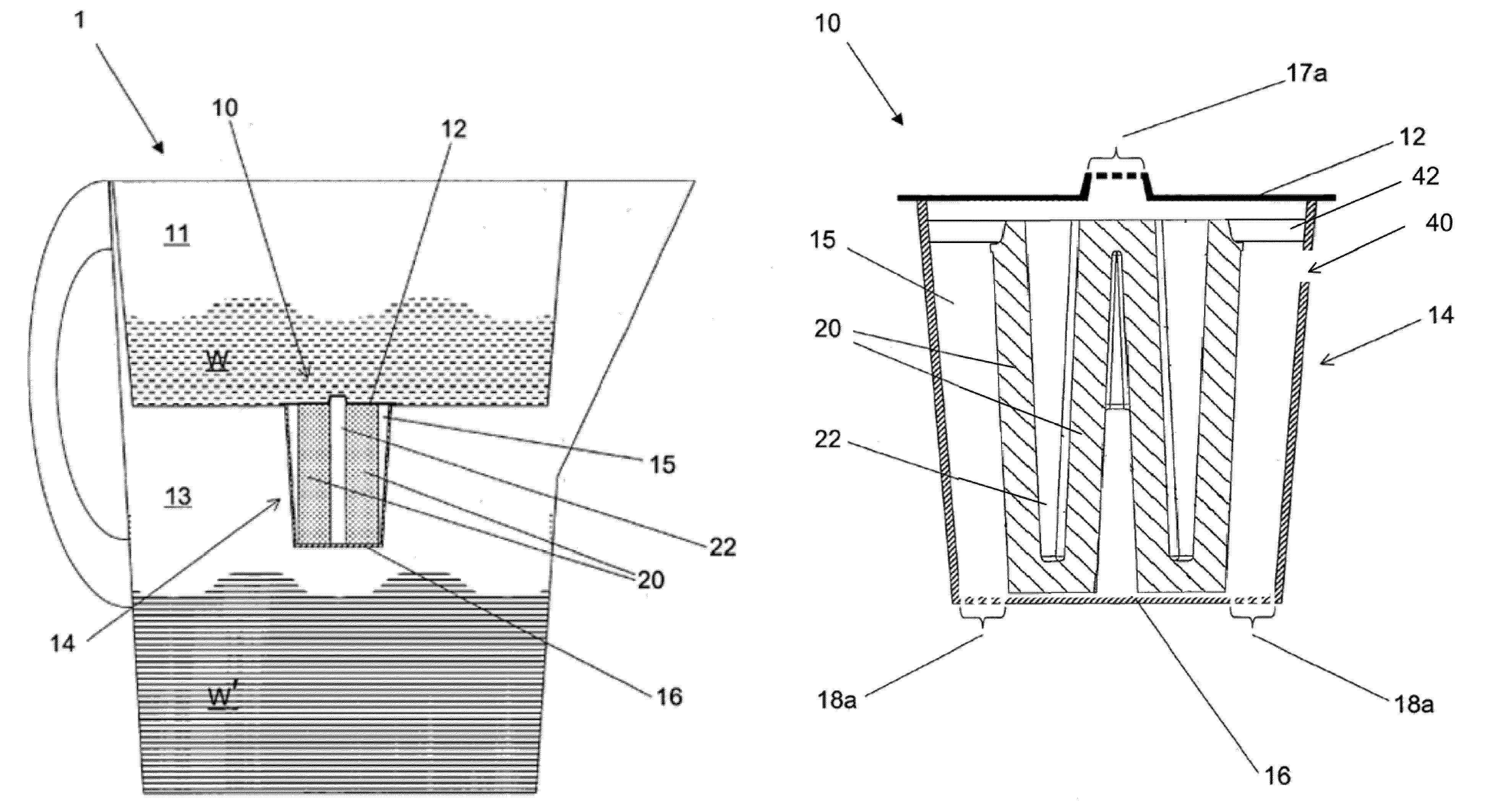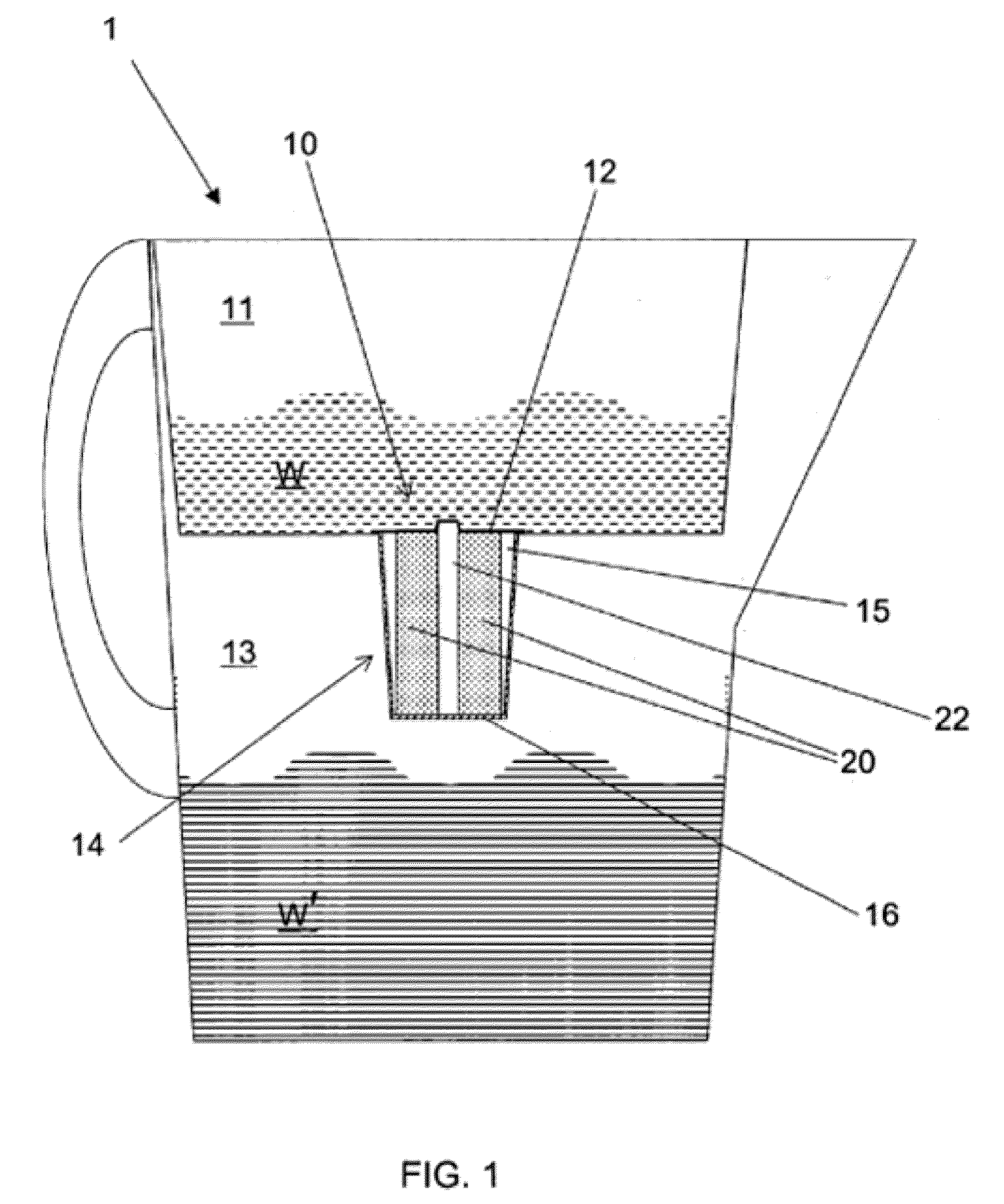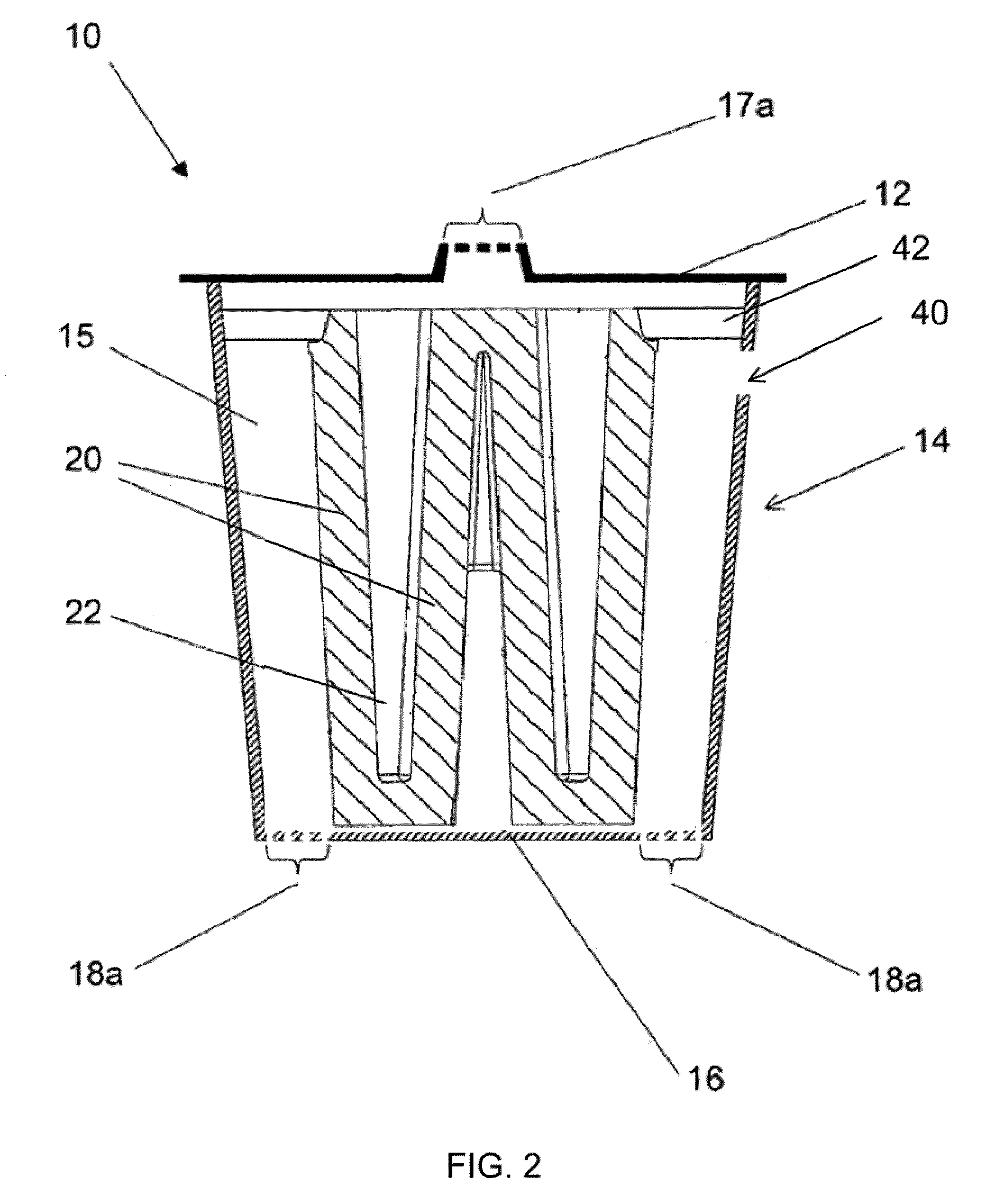Gravity flow filter
a gravity flow filter and flow rate technology, applied in the direction of filtration separation, separation process, treatment involving filtration, etc., can solve the problems of increasing pressure drop, and failing to produce the desired flow rate consistently
- Summary
- Abstract
- Description
- Claims
- Application Information
AI Technical Summary
Benefits of technology
Problems solved by technology
Method used
Image
Examples
example 1
[0223]As noted above, various sizes and types of media may be used. Many, but not all, embodiments may use activated carbon particles and thermo-set binder. In multiple-core filter blocks as illustrated in FIGS. 10-13 and 16-19, illustrative proportions of the various filter materials may be in the range of 5-45 weight percent binder, 95-35 weight percent activated carbon particles such as granular activated carbon “GAC” and, more preferably, 20-40 weight percent binder and 60-30 weight percent activated carbon particles such as GAC. A lead or arsenic sorbent may be added, typically in place of a portion of the GAC.
example 2
[0224]In multiple-core filter blocks as illustrated in FIGS. 10-13 and 16-19, examples of compositions are: 45-80 weight %, 10-15 weight % lead sorbent (such as Alusil™ 40-70, or others); and 10-40 weight % binder particles. The activated carbon may be 80×325 mesh. An activated carbon with size distribution such the following, for example, may be used: D10 10-20 microns; D50 80-90 microns; and D90 180-200 microns.
examples 3a-e
[0225]Gravity fed carbon blocks have been formulated in cylindrical multiple-core blocks (referred to as “CMC” blocks) having a shape as shown in FIGS. 10A-F. The blocks shapes provide large surface areas in the given volumes. The blocks are comprised of activated carbon in powder or fiber form, low melt flow high molecular weight binder, and a lead sorbent material.
[0226]The CMC blocks in this example have a volume of approximately 80 cm3 with and internal surface area of 265.7 cm2. The CMC blocks tested have masses ranging from 35 to 38 g.
[0227]The CMC blocks were evaluated for flow rate performance and lead reduction performance against colloidal lead challenge water prepared as defined in NSF / ANSI 53 Protocol (2007). In addition to testing the gravity fed carbon blocks, several mixed media filters, containing granular activated carbon and ion exchange resin, were tested for comparative performance.
[0228]The following Table lists some of the formulations used in the following exa...
PUM
| Property | Measurement | Unit |
|---|---|---|
| diameter | aaaaa | aaaaa |
| pH | aaaaa | aaaaa |
| volume | aaaaa | aaaaa |
Abstract
Description
Claims
Application Information
 Login to View More
Login to View More - R&D
- Intellectual Property
- Life Sciences
- Materials
- Tech Scout
- Unparalleled Data Quality
- Higher Quality Content
- 60% Fewer Hallucinations
Browse by: Latest US Patents, China's latest patents, Technical Efficacy Thesaurus, Application Domain, Technology Topic, Popular Technical Reports.
© 2025 PatSnap. All rights reserved.Legal|Privacy policy|Modern Slavery Act Transparency Statement|Sitemap|About US| Contact US: help@patsnap.com



